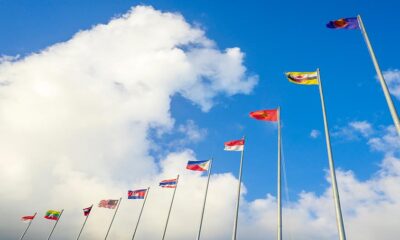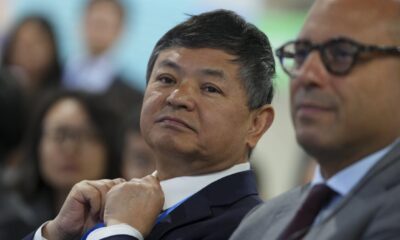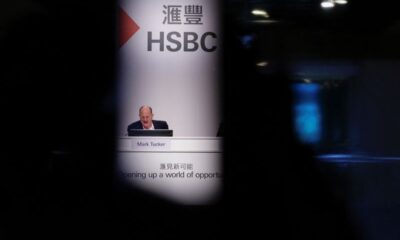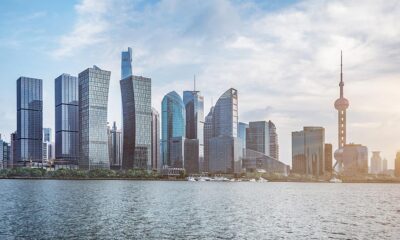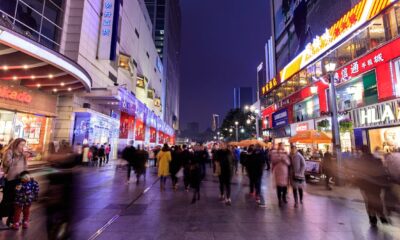China
China Isn’t Losing Its Manufacturing Competitiveness After All
It’s a raging debate in economics circles: Is China’s commanding position as the world’s low-wage factory floor eroding in the face of rising labor costs and a strengthening currency? Just a few days ago UBS economist Jonathan Anderson wrote that China is at a turning point in its dominance of labor intensive industries such as apparel and toys. He says China’s share of exports in items made by armies of low-wage workers has peaked and that places such as Vietnam, Bangladesh, Indonesia and Mexico are picking up pieces of those markets. Now comes the counterpoint. RBS’s top China economist Li Cui writes in a research note published Wednesday that “evidence of China losing out is still absent.” Her view is that China has been remarkably adaptive to rising labor costs and a strengthening currency. “One would have expected that labor intensive industries should have been hurt the most given their thin margins and relatively weak pricing power in the global market. However during this period China’s exports of light manufacturing products has risen to about one-third of the world markets (from 22% in 2005), dominating other regional competitors,” she writes. (For more background, the WSJ wrote about the topic back in July.) Ms. Cui offers three reasons for China’s enduring competitiveness in light manufacturing. China has moved up the value chain even within these labor intensive industries. Workers are more specialized and factories have more capital to create more complex products. She cites knitted shirts versus un-knitted shirts. The expansion of market share has come with productivity increases. And the rising demand from domestic markets is expanding the order sizes and economies of scale that factories can employ. Chinese producers have been able to pass some of the cost pressures to overseas markets. As for the future, she thinks the “made-in-China” label is not in trouble. “Past experience suggests that China has responded to rising unit labor cost through capital investment and product upgrades, which bodes well for continued adjustments in the future. The fast expanding domestic market gives producers an extra competitive edge to absorb the further rise in labor costs,” she writes. –Alex Frangos
It’s a raging debate in economics circles: Is China’s commanding position as the world’s low-wage factory floor eroding in the face of rising labor costs and a strengthening currency?
Just a few days ago UBS economist Jonathan Anderson wrote that China is at a turning point in its dominance of labor intensive industries such as apparel and toys. He says China’s share of exports in items made by armies of low-wage workers has peaked and that places such as Vietnam, Bangladesh, Indonesia and Mexico are picking up pieces of those markets.
Now comes the counterpoint.
RBS’s top China economist Li Cui writes in a research note published Wednesday that “evidence of China losing out is still absent.” Her view is that China has been remarkably adaptive to rising labor costs and a strengthening currency.
“One would have expected that labor intensive industries should have been hurt the most given their thin margins and relatively weak pricing power in the global market. However during this period China’s exports of light manufacturing products has risen to about one-third of the world markets (from 22% in 2005), dominating other regional competitors,” she writes.
(For more background, the WSJ wrote about the topic back in July.)
Ms. Cui offers three reasons for China’s enduring competitiveness in light manufacturing.
- China has moved up the value chain even within these labor intensive industries. Workers are more specialized and factories have more capital to create more complex products. She cites knitted shirts versus un-knitted shirts.
- The expansion of market share has come with productivity increases. And the rising demand from domestic markets is expanding the order sizes and economies of scale that factories can employ.
- Chinese producers have been able to pass some of the cost pressures to overseas markets.
As for the future, she thinks the “made-in-China” label is not in trouble.
“Past experience suggests that China has responded to rising unit labor cost through capital investment and product upgrades, which bodes well for continued adjustments in the future. The fast expanding domestic market gives producers an extra competitive edge to absorb the further rise in labor costs,” she writes.
–Alex Frangos
Annual inflows of foreign direct investment rose to nearly $108 billion in 2008.
In 2009, China announced that by 2020 it would reduce carbon intensity 40% from 2005 levels.
China is the world’s fastest-growing major economy, with an average growth rate of 10% for the past 30 years.
Available energy is insufficient to run at fully installed industrial capacity, and the transport system is inadequate to move sufficient quantities of such critical items as coal.
The two sectors have differed in many respects.
The technological level and quality standards of its industry as a whole are still fairly low, notwithstanding a marked change since 2000, spurred in part by foreign investment.
China’s ongoing economic transformation has had a profound impact not only on China but on the world.
The ministry made the announcements during a press conference held in Xiamen on the upcoming United Nations Conference on Trade and Development (UNCTAD) World Investment Forum and the 14th China International Fair for Investment and Trade.
In this period the average annual growth rate stood at more than 50 percent.
China is expected to have 200 million cars on the road by 2020, increasing pressure on energy security and the environment, government officials said yesterday.
China’s challenge in the early 21st century will be to balance its highly centralized political system with an increasingly decentralized economic system.
Agriculture is by far the leading occupation, involving over 50% of the population, although extensive rough, high terrain and large arid areas – especially in the west and north – limit cultivation to only about 10% of the land surface.
Except for the oasis farming in Xinjiang and Qinghai, some irrigated areas in Inner Mongolia and Gansu, and sheltered valleys in Tibet, agricultural production is restricted to the east.
China ranks first in world production of red meat (including beef, veal, mutton, lamb, and pork).
Offshore exploration has become important to meeting domestic needs; massive deposits off the coasts are believed to exceed all the world’s known oil reserves.
China’s leading export minerals are tungsten, antimony, tin, magnesium, molybdenum, mercury, manganese, barite, and salt.
Hydroelectric projects exist in provinces served by major rivers where near-surface coal is not abundant.
After the 1960s, the emphasis was on regional self-sufficiency, and many factories sprang up in rural areas.
Link:
China Isn’t Losing Its Manufacturing Competitiveness After All
Business
Democrat Claims Musk is Undermining Spending Bill Due to China Restrictions – The Hill
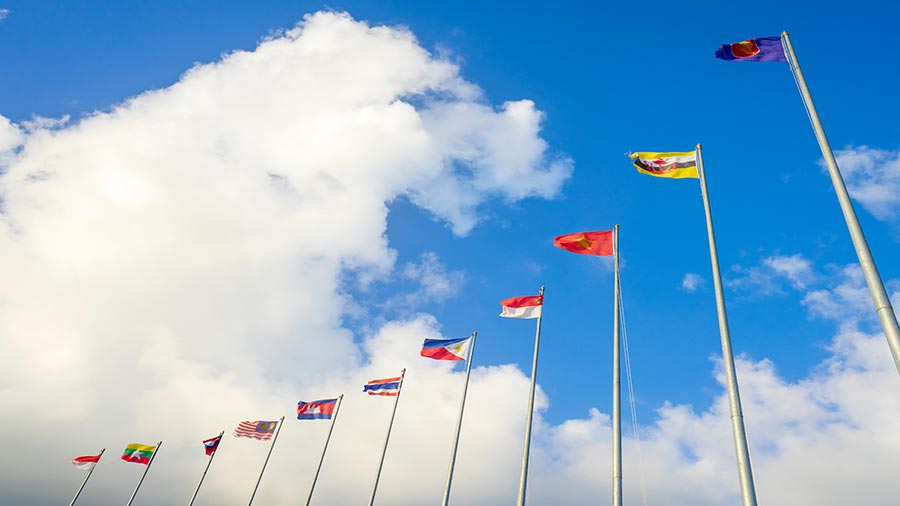
A Democrat claims Elon Musk influenced the reduction of a spending bill due to its restrictions on China, suggesting his actions impacted the legislation’s progress and funding allocation.
Allegations Against Musk
A prominent Democrat has accused Elon Musk of deliberately sabotaging a significant spending bill in response to China-related restrictions. This accusation comes amid ongoing tensions between the U.S. and China, particularly regarding technology and trade policies. The claims suggest that Musk’s influence is affecting critical legislative processes, raising concerns among lawmakers about foreign influence in American politics.
Implications for Legislation
The potential ramifications of Musk’s alleged actions could be significant. As a major player in the tech industry, his decisions can sway public opinion and impact the economy. Lawmakers fear that if influential figures like Musk oppose necessary legislation, it might hinder efforts to address vital issues such as national security and economic stability.
Political Reactions
The controversy has sparked debates among both Democrats and Republicans, highlighting the intersection of technology and politics. Many are demanding greater transparency and accountability from tech giants. As the situation unfolds, lawmakers may need to reassess their strategies to ensure that essential legislation moves forward uninterrupted.
Source : Democrat accuses Musk of tanking spending bill over China restrictions – The Hill
China
Dissolving a Company in China: A Comparison of General Deregistration and Simplified Deregistration

China promotes simplified deregistration to enhance its business environment, offering a faster process requiring fewer documents than general deregistration. Companies must meet eligibility criteria, resolve issues, and can choose procedures based on their situation, ensuring compliance for both options.
In addition to the general deregistration procedures, China has been promoting simplified deregistration as one of the key measures to enhance its business environment. This article highlights the differences between the general and simplified procedures, explains the eligibility criteria, and clarifies common misunderstandings about these processes.
Foreign investors may decide to close their business for multiple reasons. To legally wind up a business, investors must complete a series of procedures involving multiple government agencies, such as market regulatory bureaus, foreign exchange administrations, customs, tax authorities, banking regulators, and others. In this article, we outline the company deregistration process overseen by the local Administration for Market Regulation (AMR), comparing the general and simplified procedures.
Before 2016, companies could only deregister through the general procedure. However, on December 26, 2016, the Guidance on Fully Promoting the Reform of Simplified Company Deregistration Procedures was released. Effective March 1, 2017, simplified deregistration procedures were implemented nationwide. Since then, there have been two options: general procedures and simplified procedures.
Companies must follow the general deregistration process if any of the following conditions apply (hereinafter referred to as “existing issues”):
Companies not facing the above issues may choose either the general or simplified deregistration process.
In summary, simplified deregistration is a faster process and requires fewer documents compared to general deregistration. Companies that meet the criteria typically would typically opt for simplified deregistration. Those that do not meet the criteria may choose this route after resolving outstanding issues. For companies with unresolved issues but seeking urgent closure, they can first publish a deregistration announcement. Once the announcement period ends and all issues are addressed, they can proceed with general deregistration. Some companies may question the legitimacy and compliance of simplified deregistration. This is a misconception. “Simplified” does not mean non-compliant, just as “general” does not imply greater legitimacy. Both processes are lawful and compliant. The AMR provides these options to enable companies ready for closure to complete the process efficiently while granting those with unsolved issues the necessary time to address them after publishing the deregistration announcement. Companies can select the most suitable process based on their specific circumstances.
| This article was first published by China Briefing , which is produced by Dezan Shira & Associates. The firm assists foreign investors throughout Asia from offices across the world, including in in China, Hong Kong, Vietnam, Singapore, and India . Readers may write to info@dezshira.com for more support. |
Read the rest of the original article.
China
China’s influence grows at COP29 climate talks as US leadership fades

The 2024 U.N. climate talks in Baku yielded mixed results, agreeing to increase funding for developing nations. However, challenges remained in addressing greenhouse gas emissions and achieving sustainable progress.
The 2024 U.N. climate talks ended in Baku, Azerbaijan, on Nov. 24 after two weeks of arguments, agreements and side deals involving 106 heads of states and over 50,000 business leaders, activists and government representatives of almost every country.
Few say the conference was a resounding success. But neither was it a failure.
The central task of the conference, known as COP29, was to come up with funding to help developing countries become more resilient to the effects of climate change and to transition to more sustainable economic growth.
The biggest challenge was agreeing on who should pay, and the results say a lot about the shifting international dynamics and offer some insight into China’s role. As a political science professor who has worked on clean tech policy involving Asia, I followed the talks with interest.
Slow global progress
Over three decades of global climate talks, the world’s countries have agreed to cut their emissions, phase out fossil fuels, end inefficient fossil-fuel subsidies and stop deforestation, among many other landmark deals.
They have acknowledged since the Rio Earth Summit in 1992, when they agreed to the U.N. Framework Convention on Climate Change, that greenhouse gas emissions produced by human activities, including the burning of fossil fuels, would harm the climate and ecosystems, and that the governments of the world must work together to solve the crisis.
But progress has been slow.
Greenhouse gas emissions were at record highs in 2024. Governments are still subsidizing fossil fuels, encouraging their use. And the world is failing to keep warming under 1.5 degrees Celsius compared with preindustrial times – a target established under the 2015 Paris Agreement to avoid the worst effects of climate change.
Extreme weather, from lethal heat waves to devastating tropical cyclones and floods, has become more intense as temperatures have risen. And the poorest countries have faced some of the worst damage from climate change, while doing the least cause it.
Money for the poorest countries
Developing countries argue that they need US$1.3 trillion a year in financial support and investment by 2035 from the wealthiest nations – historically the largest greenhouse gas emitters – to adapt to climate change and develop sustainably as they grow.
That matters to countries everywhere because how these fast-growing populations build out energy systems and transportation in the coming decades will affect the future for the entire planet.
Negotiators at the COP29 climate talks. Less developed countries were unhappy with the outcome.
Kiara Worth/UN Climate Change via Flickr
At the Baku conference, member nations agreed to triple their existing pledge of $100 billion a year to at least $300 billion a year by 2035 to help developing countries. But that was far short of what economists have estimated those countries will need to develop clean energy economies.
The money can also come from a variety of sources. Developing countries wanted grants, rather than loans that would increase what for many is already crushing debt. Under the new agreement, countries can count funding that comes from private investments and loans from the World Bank and other development banks, as well as public funds.
Groups have proposed raising some of those funds with additional taxes on international shipping and aviation. A U.N. study projects that if levies were set somewhere between $150 and $300 for each ton of carbon pollution, the fund could generate as much as $127 billion per year. Other proposals have included taxing fossil fuels, cryptocurrencies and plastics, which all contribute to climate change, as well as financial transactions and carbon trading.
China’s expanding role
How much of a leadership role China takes in global climate efforts is an important question going forward, particularly with U.S. President-elect Donald Trump expected to throttle back U.S. support for climate policies and international funding.
China is now the world’s largest emitter of greenhouse gases and the second-largest economy.
China also stands to gain as provider of the market majority of green technologies, including solar panels, wind turbines, batteries and electric vehicles.
Whether or not China should be expected to contribute funding at a level comparable to the other major emitters was so hotly contested at COP29 that it almost shut down the entire conference.
Previously, only those countries listed by the U.N. as “developed countries” – a list that doesn’t include China – were expected to provide funds. The COP29 agreement expands that by calling on “all actors to work together to enable the scaling up of financing.”
In the end, a compromise was reached. The final agreement “encourages developing countries to make contributions on a voluntary basis,” excluding China from the heavier expectations placed on richer nations.
Side deals offer signs of progress
In a conference fraught with deep division and threatened with collapse, some bright spots of climate progress emerged from the side events.
In one declaration, 25 nations plus the European Union agreed to no new coal power developments. There were also agreements on ocean protection and deforestation. Other declarations marked efforts to reenergize hydrogen energy production and expanded ambitious plans to reduce methane emissions.
Future of UN climate talks
However, after two weeks of bickering and a final resolution that doesn’t go far enough, the U.N. climate talks process itself is in question.
In a letter on Nov. 15, 2024, former U.N. Secretary-General Ban Ki-moon and a group of global climate leaders called for “a fundamental overhaul to the COP” and a “shift from negotiation to implementation.”
After back-to-back climate conferences hosted by oil-producing states, where fossil-fuel companies used the gathering to make deals for more fossil fuels on the side, the letter also calls for strict eligibility requirements for conference hosts “to exclude countries who do not support the phase out/transition away from fossil energy.”
With Trump promising to again withdraw the U.S. from the Paris Agreement, it is possible the climate leadership will fall to China, which may bring a new style of climate solutions to the table.
This article is republished from The Conversation under a Creative Commons license. Read the original article.








